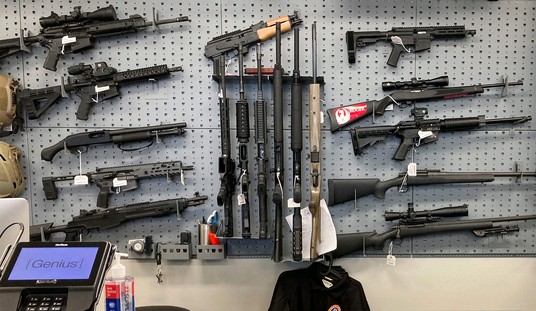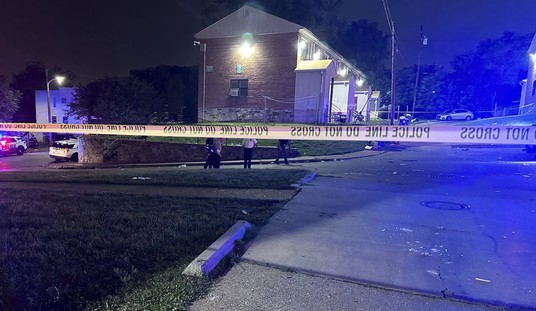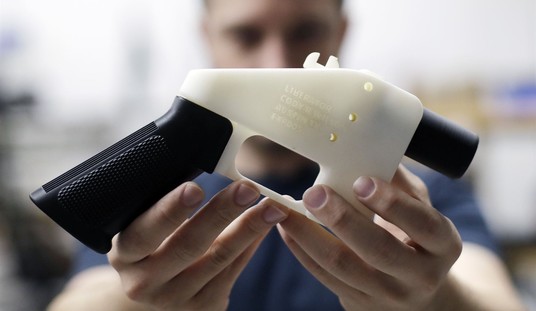Previous article in the series:
Welcome to Gunfighter School
Gunsite: Brilliance in the Basics

“Make Ready!”
Monday, the first day of 250 Pistol at Gunsite Academy, is very much about learning the “Gunsite way.” We learned some of the philosophies that Col. Jeff Cooper laid down as the groundwork for the world’s first dedicated private shooting school, including the Modern Technique of the Pistol. We learned range commands, did dry fire and live basic shooting drills, and shook off the nerves and “range rust” some of us had accrued. At least one shooter decided on a major equipment change, and swapped out a gun (and caliber) overnight.
It was the first time that I was running my equipment as an integrated system, and i didn’t have it quite perfected yet. While Walther PPQ with the 5″ barrel was accurate when I did my part, I was still fiddling with where on my belt to place the two single mag pouches from Statureman Custom on my support side. Statureman’s Kydex holster sat perfectly at my four’ o’clock with a balance of great retention and a fast draw.
If Monday was orientation, Tuesday felt like drinking from the proverbial fire hose.
While we were still working to become familiar with the Modern Technique and drawing and firing from the holster and low ready positions that many of us weren’t allowed to practice on our home ranges, the instructor cadre began throwing malfunction clearance drills and reloads.
We going to use a series of videos recorded by the National Shooting Sports Foundation (NSSF) to help show the malfunction clearance drills and reloads that we learned, as it is easier to watch the techniques in action that it is for me to try to describe it.
The first and most common kind of malfunction clearance is the Tap, Roll, Rack drill. It’s as simple as tapping the magazine to ensure that it is seated properly in the pistol, rolling the pistol toward towards the ejection port side so that gravity can be our friend, and then racking the slide to clear the malfunction.
Quite frankly, we don’t care about the specifics of the malfunction, because we’re in a gunfight (you will fight like you train) and want to get the weapon back into action as quickly as possible.
The Tap, Roll, Rack will clear the majority of failures, but every once in a while you will “tap,”, “roll” and then come to a sudden stop when you try to “rack” the slide before the slide travels fully to the rear. The most common reason for this failure is a double feed, but again, we don’t care about that right now. We just want to clear the stoppage and get our pistol back into the fight.
The first thing you will do in such a scenario (whether you can actually see the double feed or not), is to lock the slide to the rear. We then release but retain the magazine, and tuck it in tight in our armpit, clamping it between out arm and our torso to hold it. You then rack the slide vigorously three times to make sure that the action works, replace the magazine, and then run the slide again to chamber a round and get back in the fight.
These two malfunction clearance drills should take care of every common malfunction; if you have a problem that these two clearance drills don’t work on, you’re going to probably end up needing a gunsmith… and hopefully, you never experience something that catastrophic when your life is on the line.
[article continues on next page]
Reloading is all about technique, and like the malfunction clearance drills, it is easier to show you how to do one than tell you. Here’s Gunsite instructor Dave Starin showing us how a tactical reload (“tac load”) is done.
You’ll note that tactical reloads are done only when the immediate threat has passed, and if possible, the shooter has had a chance to find cover. In a tactical reload, you’re looking to retain your partially expended magazine, while swapping it out for a full magazine while you still have a round in the chamber.
Tactical reloads are about getting you set up to face the next threat.
Doing tactical reloads correctly, the Gunsite way, proved to be difficult for many of us to get at first, but with repetition came smoothness, and we did tactical reloads at least a dozen times a day, every day, and then did more at night on our own with empty magazines and weapons.
Obviously, it was difficult to find cover on an open square range, but determining when and where to tactical reload, while keeping a mental count of how many rounds you’ve fired, became critical in the indoor and outdoor simulators.
By comparison, the speed load was dead stupid easy.
Whether you do a tactical reload or a speed reload depends on your current situation. A prerequisite for a tactical reload is that there must be at least a momentary break in the action, and preferably behind cover, to swap and retain a partially expended magazine while loading a fully loaded magazine.
In contrast, speed reload takes place while you still have an active threat, and either have run your gun dry, or you know that you have few rounds remaining and you need a fresh magazine in your gun, now.
[article continues on next page]

The range sessions Tuesday were carefully designed to layer reloading and malfunction clearance drills on top of the mechanics of the Modern Technique of the Pistol, adding complexity while reiterating the lessons learned the day before.
The day ended with a classroom lecture on the terminal ballistics of handgun rounds, noting from the beginning that handguns are weak and notoriously ineffective at stopping a determined adversary. Short of a hit to the central nervous system that paralyzes limbs or destroys the brain, or a skeletal system hit that fractures bones and removes the body’s physical support system, a determined enemy can continue the fight even after suffering a fatal hit. Bank robber Michael Lee Platt proved during the infamous 1986 FBI Miami shootout in which Platt suffered the wound that ultimately killed him near the beginning of the fight, and yet managed to kill two FBI agents and wound for more before finally going down for good.
While countless column inches and hours have been spent debating the merits of various calibers and bullet designs, the simple fact of the matter is that lacking a central nervous system or skeletal system hit, a human body is capable of fighting for as long as blood keeps pumping to the vital organs. The best way to affect a physical stop, barring a CNS or bone strike, is to put as many holes as deeply as possible into as many organs and major blood vessels as possible to cause your adversary to bleed out.
Summed up, “air goes in and out, blood goes round and round. any variation of that is bad.”
We’d learned a lot, but the week wasn’t yet halfway over, and we still had a long way to go.
Previous article in the series:
Welcome to Gunfighter School
Gunsite: Brilliance in the Basics








Join the conversation as a VIP Member